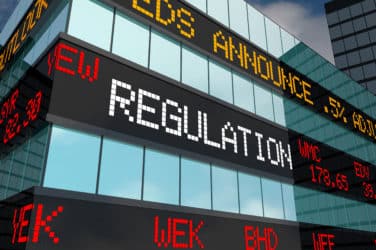
The stablecoin industry is racing to attract institutional backing and achieve greater regulatory clarity by improving disclosure policies and adopting high-quality reserves.
As of September 2021, global stablecoin supply reached $120 billion, the vast bulk of which comes from industry leaders Tether (USDT), USD Coin (USDC) and Binance USD (BUSD).
*New* Stablecoins Rock the Boat, Clarity Needed to Calm the Waters https://t.co/8QQ2DjQdRi via @CoalitionGrnwch by @deasthope
— Coalition Greenwich (a division of CRISIL) (@CoalitionGrnwch) November 9, 2021
Stablecoins are attracting interest and support among a broad group of banks, brokers, exchanges, buy-side firms, and technology companies. These market participants see stablecoins as an “on-ramp” to facilitate the exchange between fiat currency and digital assets. They also see huge potential for stablecoins as a mechanism for real-time transaction settlements and payments, and supporting the quest for yield.
However, the stablecoin industry and infrastructure are still very much a work in progress. Approximately 70% of the crypto market participants participating in a new Coalition Greenwich study see regulatory uncertainty as a primary disadvantage for stablecoins. Around the world, market participants also express concerns about stablecoin mechanics and governance.
“On the surface, some stablecoins have a composition like money market mutual funds. However, from a regulatory and risk-management perspective, they are anything but—a point not lost on regulators,” says David Easthope, Senior Analyst for Coalition Greenwich Market Structure & Technology and author of Stablecoins Rock the Boat, Clarity Needed to Calm the Waters.
More Transparency and Accountability
Institutions overwhelmingly prefer stablecoins backed 100% by fiat currency, meaning stablecoins that maintain cash in an account backing the issuance. However, as transparency has improved, the industry is learning that 1:1 backing does not always mean cash in hand, but in some cases can mean cash equivalents, such as money market funds, commercial paper and other short-term fixed-income instruments.
“Despite its rapid growth, the stablecoin industry today is still a bit murky, and market participants do not have complete and continuous disclosure of what is backing the leading stablecoins,” says David Easthope.
The industry is responding. For example, to address these concerns, Circle announced in August 2021 its intention for its USDC reserves to be 100% backed by cash and short-duration U.S. Treasuries. As of September 2021, 100% of issued and outstanding tokens were backed by U.S. dollars in custody accounts, according to Circle’s auditor.
“Stablecoins are here to stay because they offer significant advantages for capital markets institutions, including the exchange between fiat and crypto, settlements, yield products, and payments,” says David Easthope. “However, despite enhanced transparency, there remains a high degree of regulatory uncertainty around stablecoins, and institutions will require more transparency and accountability from issuers for further adoption.”
Stablecoins Rock the Boat, Clarity Needed to Calm the Waters presents the results of the Coalition Greenwich 2021 Digital Assets and Blockchain Capital Markets Study, and provides an in-depth analysis of the industry, including engagement levels, primary benefits and use cases, disadvantages, user preferences, and the current competitive landscape of stablecoins and providers.
Source: Coalition Greenwich






